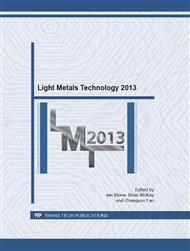p.756
p.761
p.766
p.771
p.776
p.783
p.788
p.793
p.798
Microstructure and Mechanical Properties of Refilled Friction Stir Spot Welding of Commercial Pure Aluminium
Abstract:
Aluminium and magnesium alloys are expected to make considerable contributions in reducing the weight of automobiles as they are increasingly used as an alternative to steel; improving fuel economy and vehicle performance while simultaneously reducing emissions. Higher electrical and thermal conductivities of these materials make them difficult to weld using existing resistance spot welding leading to high energy consumption. Friction stir spot welding has proven to be a better alternative to weld these materials. But a probe hole left behind is the main problem in conventional Friction Stir Spot welding (FSSW). In the present work a new method has been developed to refill the probe hole using an additional filler plate known as Refill Friction Stir Spot welding (RFSSW). This new refilling technique and the conventional FSSW process were both used to weld commercially pure aluminium lap shear specimens and the results were compared. The effect of tool rotational speed on mechanical and metallurgical properties were studied in both cases. Static shear strength of RFSSW weld samples was found to be better than conventional FSSW process at higher tool rotational speed. This is explained in terms of effective increase in cross sectional area of weld nugget due addition of more material from the filler plate thereby eliminating the probe hole.
Info:
Periodical:
Pages:
776-780
Citation:
Online since:
July 2013
Authors:
Price:
Сopyright:
© 2013 Trans Tech Publications Ltd. All Rights Reserved
Share:
Citation:


